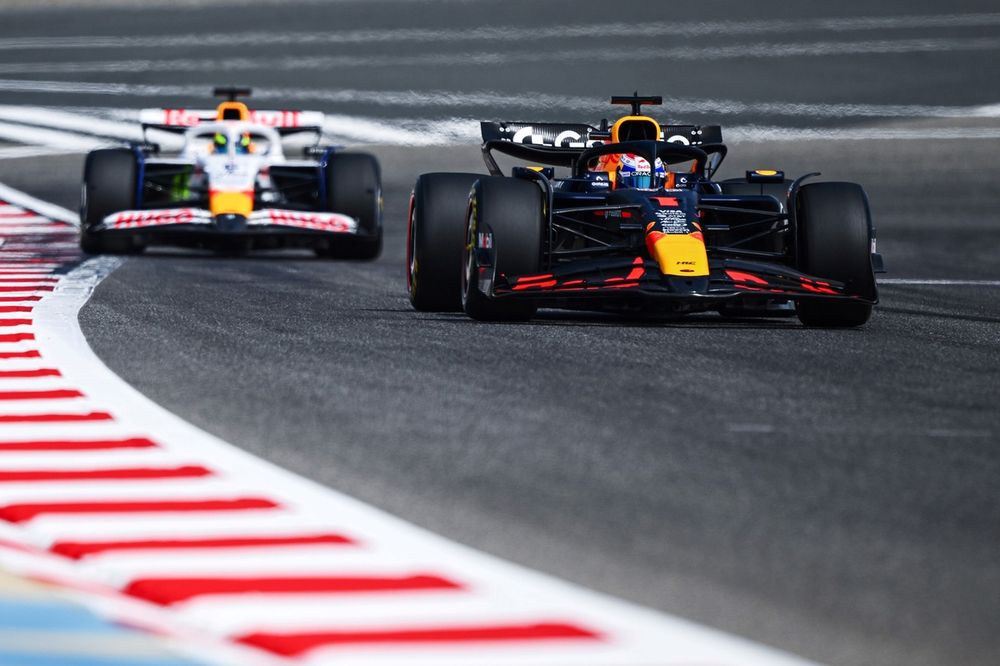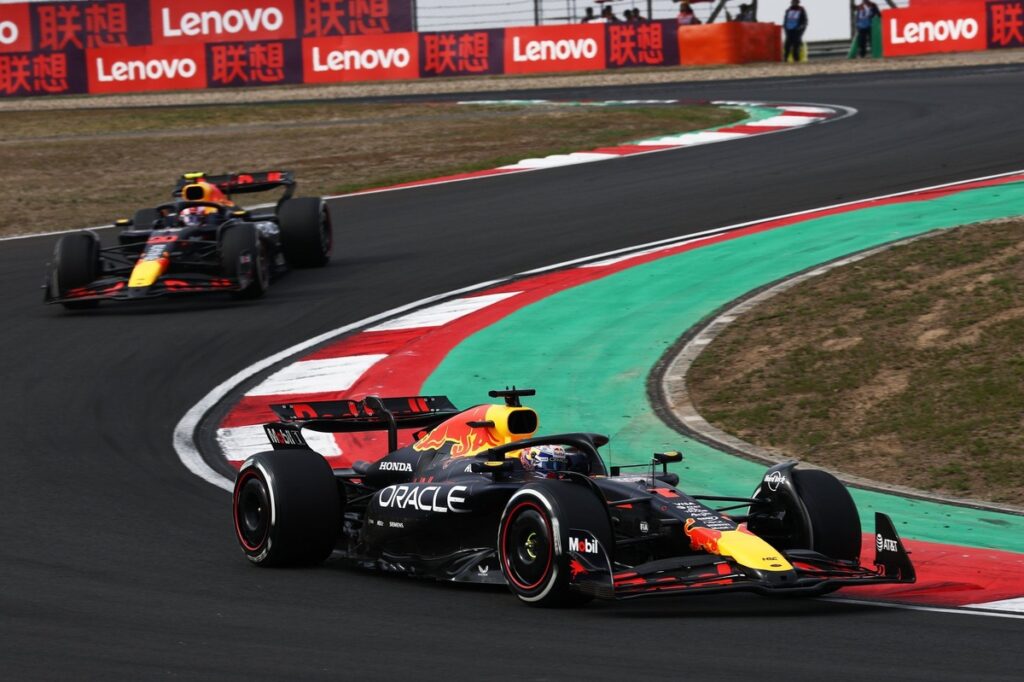The saga surrounding Yuki Tsunoda’s promotion and Liam Lawson’s demotion to Racing Bulls is thus: for years now, around and through Max Verstappen’s four world titles, Red Bull has been a one-car Formula 1 squad.
Since Daniel Ricciardo’s exit from the peak of his F1 career in 2018, Pierre Gasly, Alex Albon, Sergio Perez and now Lawson have tried and failed to cope with driving a car principally arranged to suit the uber-pointy front-end preference of Verstappen across the Red Bull garage. That’s through two different design rules eras.
Resplendent in one-off white, Tsunoda will start his attempt to avoid joining that list at this weekend’s Japanese Grand Prix.
But, from the seriousness of Perez’s inability to match Verstappen’s points hauls in 2021 and 2024 costing Red Bull two constructors’ championships, a wry observation from within the F1 paddock last time out at the Chinese GP hinted there might be a quick fix for Christian Horner’s squad.
Given Verstappen was suggesting in Shanghai that the Racing Bulls car is “easier to drive than ours”, then why wouldn’t a solution be to paint a VCARB 02 to run in the chosen colours of the second Red Bull?
Liam Lawson, Red Bull Racing, Isack Hadjar, RB F1 Team
Photo by: Red Bull Content Pool
The upsides for Red Bull would be clear.
It could concentrate on fettling the RB21 to keep giving Verstappen the strong front end he wants, but reduce the confidence-sapping rear end snaps that even his prodigious talent can’t tame when they randomly strike.
At the same time, whoever is deigned to be Verstappen’s team-mate on any given weekend – he’s about to have a third in just four grands prix, since Abu Dhabi last year – would get to drive the more compliant Racing Bulls package, with its slightly higher ride height usually making it easier to drive.
There’s even historic F1 examples of teams fielding very different car specifications – from the low- and high-downforce Red Bull RB20 packages Perez and Verstappen were respectively running at last year’s Hungarian GP, to McLaren entering its regular M7A cars (arranged in three different specifications), as well as the one-off four-wheel drive M9A at the 1969 British GP.
Obviously, this being the relentlessly real modern world, Red Bull’s F1 rivals would object to such a gambit as the championship has long moved on from this being allowed.
They would have the legal basis to stop this plan in its tracks (which doesn’t stop it being an intriguing discussion in a sphere as intricate and fascinating as motorsport).
The main rule such an attempt would fall afoul of is Article 17.3 (and its many sub-categories) of F1’s technical regulations, which covers “Listed Team Components” (LTC). This limits teams to adding specific parts (including all aerodynamic surfaces) to their cars for in-competition use that they have designed themselves.
Then there is also rule Article 17.5 on Transferable Components (TRC), which covers parts that teams can build and then sell to others.
This is particularly pertinent to the Red Bull/Racing Bulls situation given they share many mechanical parts – including suspension for both front and rear axles, plus gearboxes.

Max Verstappen, Red Bull Racing, Isack Hadjar, RB F1 Team
Photo by: Red Bull Content Pool
F1’s technical rules also include Standard Supply Components (SSC) and Open Source Components (OSC) parts supply that cover specific (and generally not performance-influencing) elements of cars that are outsourced in production terms to suppliers. This can include other squads.
Although such rules have been tweaked over the years – mainly around Haas’s arrival as an F1 competitor using as many listed parts produced by Ferrari as permitted back in 2016 – Red Bull is actually the main reason why rules that ban customer cars exist in the first place.
Since late 2005, Red Bull has owned both its eponymous squad and its many-named junior team, which led to the complex outlawing of two teams running near-identical designs back in 2010.
As a kicker, F1’s rules (Article 17.2.4 and 17.2.6 of the 2025 technical regulations) even prohibit Red Bull transferring staff between its two squads to share any ideas.
And Red Bull couldn’t even use pictures, scans or video footage to replicate Racing Bull’s compliant package for one car – it would have to use up its own resources conducting the research behind such designs.
In the cost cap era, that’s harder than ever and, really, a headache Red Bull could do without as it continues its self-set task of providing Verstappen with a car to suit his genius needs that doesn’t destroy the chances of his team-mate. And, right now, that doesn’t even add up to the quickest car for just one Red Bull driver…
In this article
Alex Kalinauckas
Formula 1
Red Bull Racing
Be the first to know and subscribe for real-time news email updates on these topics
Subscribe to news alerts
Read the full article here

